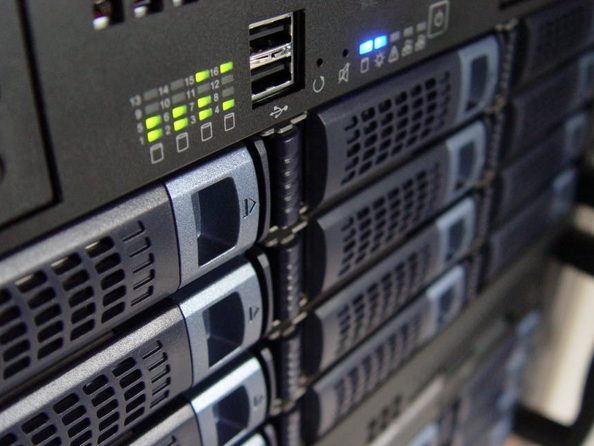7 Signs It’s Time to Upgrade Your Small Business Server.

Is your business running smoothly with all your computer hardware working well? That’s great, for now. However, you never know when things will change and when your equipment will start failing.
That’s why knowing when to upgrade your server hardware is essential. That’s why businesses spend 35% of their annual technology budget on computer hardware.
You can’t afford to have your small business server fail during business hours, so it pays to know the signs to look for when it’s time for an upgrade. Keep reading to learn seven warning signs that you need a new business server.
1. Poor Server Performance
Business servers run great when you first buy them. They have all the resources you need and offer performance that you can’t match with outdated hardware. You’ll likely see these benefits for a few years, but as time goes on, you’ll start noticing problems with performance.
Your server hardware won’t be able to keep pace with the needs of your business, and it will become more and more challenging to keep up with peak demand. This is even more apparent in the future when your hardware ages and stops performing at peak levels.
Pay attention to your server’s response time to see how well it performs. If it doesn’t meet your demands today, it’s time to upgrade to better server hardware that isn’t aged.
2. Constant Maintenance
One of the best things about new servers is that they’re stable out of the box. Your server may not need any maintenance for months, but after a while, you’ll need to do some work to keep it running smoothly.
It’s easy to get technical support by talking with your business services provider like the experts at Techspert Services or reading through your server documentation. However, you’ll eventually have issues you can’t quickly solve.
While this might not be a big deal initially, it becomes a problem when you need business server repair often. As your server ages, it will continue facing problems and will end up wasting a lot of time and money to keep up. In these cases, it’s worth investing in new hardware, so you don’t have to deal with constant server maintenance.
3. Unable to Run New Software
Using old software can only get you so far. If a business doesn’t do well, it will abandon software products and leave its customers abandoned. You’ll need to invest in new products when this happens.
Unfortunately, not all new products work well with old hardware. If your hardware is old enough, the chances are good you can’t make the upgrade. You’ll see a list of requirements when you browse the software’s website.
You’ll need new hardware in this situation. The best server for small business will let you run almost all up-to-date software and help your business keep moving forward.
4. Noisy Server
Some server upgrades don’t make much noise. You’ll hear the server make a hum when running, but it shouldn’t be noticeable anywhere else in the office. However, when a server is aging, it might make a lot of noise.
A loud server is a sign that it’s working too hard. While servers are noisy, it will be noticeable when things are louder than they should be.
On top of that, a server working too hard places a lot of strain on other components. It won’t only wear down the worn-out hardware quicker, but it will also cause other server parts to fail more quickly.
5. It’s Hard to Manage Assets
You need a lot of tools to run a business these days. While some companies use a cloud server provider to handle those tasks, others require an in-house server to host applications and manage assets. Unfortunately, older servers aren’t always great at managing those assets.
You need your server to be good at managing applications, data, and communication. Modern servers have the resources necessary to handle all those tasks.
If you’re growing your business and plan to increase the digital assets you need to manage, it’s probably time for a server upgrade. You don’t want to fight with old hardware when trying to find a more efficient way to run your company.
6. Growing Power Bills
Your power bill is an essential factor that indicates how well your server is performing. It should stay relatively the same over time. But if your power bill is getting higher, it could indicate a problem with your server.
Power bills are affected by a lot of factors, but the most important one is efficiency. You’ll want to make sure that your server uses energy efficiently to keep costs down. If your server is having problems keeping up with your company’s demands, it’s going to make it harder for it to work.
When this happens, it will try to overextend itself and use more resources. You’ll see a higher power bill when that happens.
7. Unable to Get Security Updates
As the years go by, new vulnerabilities surface on your server. As you continue to use your server, it will become harder to patch these issues.
You’ll need advanced security updates to make sure your data isn’t at risk of hacking or other damages. Without them, your company will be less protected.
You’ll want to make sure that you receive all the updates available without any hassles. Unfortunately, some vendors will discontinue support and updates for their older devices. You’ll need to update your server if you want to keep getting the newest security updates from your vendors.
Your Small Business Server Won’t Last Forever
While your business server may run great when you first buy it, that will only last for so long. Your small business server will start wearing out as the years ago on. Ensure you know when to do upgrades, so you don’t get left with outdated hardware that fails to meet your business needs.
If you want to learn more about the role tech plays in improving businesses, head back to the blog to see more posts on the newest trends in technology.





